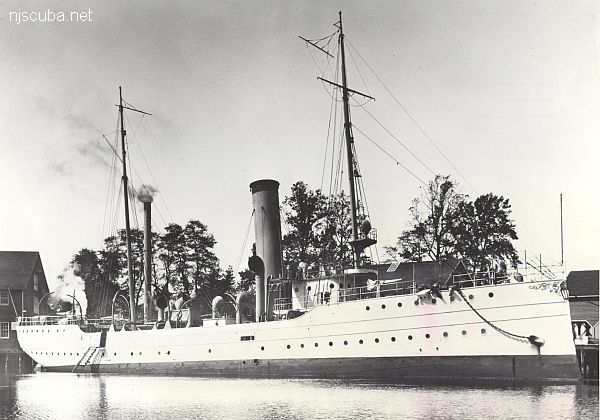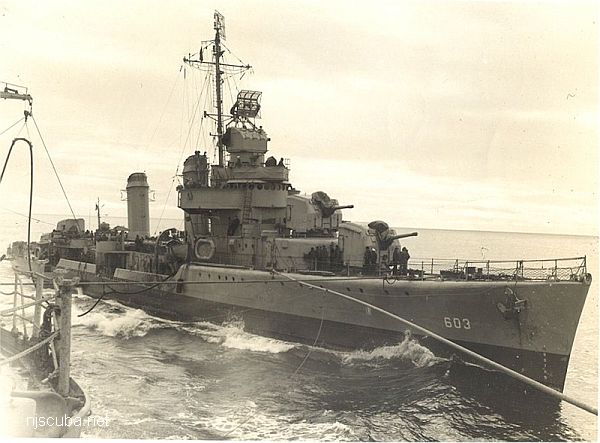Maritime Salvage Law (3/3)
Navy Policy
Department of the Navy Policy Regarding Custody and Management of Sunken Naval Vessels and Aircraft Wreck Sites

Department of the Navy ship and aircraft wrecks are government property in the custody of the U.S. Navy. These seemingly abandoned properties remain government-owned until the Navy takes specific formal action to dispose of them.
Navy custody of its wrecks is based on the property clause of the U.S. Constitution and international maritime law and it is consistent with Articles 95 and 96 of the Law of the Sea Convention. These laws establish that right, title, or ownership of federal property is not lost to the government due to the passage of time. Only by congressional action can ship and aircraft wrecks be declared abandoned.
Through the sovereign immunity provisions of Admiralty law, the Department of the Navy retains custody of all of its naval vessels and aircraft, whether lost within U.S., foreign, or international boundaries. Past court cases supporting this doctrine include litigation in Hatteras Inc., v. The USS Hatteras (1984) and U.S. v. Richard Steinmetz (1992, also known as the " Alabama bell case"). The treatment of historic naval aircraft throughout the world's oceans has also conformed to these laws.
Under the National Historic Preservation Act (NHPA), the U.S. Navy is obligated to protect its historic properties, including ship and aircraft wrecks, for which it has custodial responsibilities. The NHPA directs federal agencies to manage their cultural resource properties in a way that emphasizes preservation and minimizes the impact of undertakings that might adversely affect such properties. It is important to note that the management of Navy cultural resources such as ship and aircraft wrecks is not only a matter of historic preservation. The issues of war graves, unexploded ordnance, and potential military usage of recovered weapons systems must also be addressed in wreck-site management.
Questions and information concerning U.S. Navy ship and aircraft wrecks should be addressed to:
Underwater Archaeology Branch
Naval Historical Center
805 Kidder Breese Street SE
Washington Navy Yard DC 20374-5060
202-433-2210; 202-433-2729 (fax)
Common Questions
Who owns U.S. Navy ship and aircraft wrecks?
The Department of the Navy retains custody of all its ship and aircraft wrecks unless specific, formal action is taken to dispose of them. The administrative act of striking an aircraft or ship from the active list does not constitute disposal. Even aircraft and ship wrecks that are stricken from the active list remain the property of the United States until such time affirmative action is taken to dispose of these properties, such as sale, or other action in accordance with law.

What do I do if I want to dive on Navy ship or aircraft wrecks?
Divers may dive on Navy ship and aircraft wrecks at their own risk. However, federal property law dictates that no portion of a government wreck may be disturbed or removed. Unauthorized removal of any property from a U.S. Navy wreck is illegal. Sections of the U.S. Code have been successfully applied in prosecuting individuals who violate Navy wreck sites. Navy wrecks may contain unexploded ordnance and other hazards and should be approached with the utmost caution. Please note that diving on wreck sites located in National Park or National Oceanic and Atmospheric Administration sanctuaries may require a dive permit available through those agencies. The Navy strongly encourages cooperation with other agencies and individuals interested in preserving our maritime and aviation heritage. The diving public is encouraged to report the location of underwater ship and aircraft wreck sites to the NHC. Documentation of these wreck locations allows the Navy to evaluate and preserve important sites for the future.
What if I witness another diver removing parts from a Navy wreck?
If you witness the theft of material from a Navy wreck, report it to the U.S. Coast Guard, the NHC, and to your State Historic Preservation Officer or State Underwater Archaeologist. Vandalism of public property is both illegal and inconsiderate to other divers. If theft or destruction is unreported, underwater sites will soon be destroyed and unavailable for future use.
What if I want to recover a Navy-owned wreck?
Recovery of historic ship or aircraft wrecks will be considered only for educational or scientific purposes. It is unlikely the Department of the Navy will recommend the disposal and sale of historic ship or aircraft wrecks. It has been Navy policy not to dispose of historic ship and aircraft wrecks for the following reasons:
- Congress has mandated through the NHPA that the Department of the Navy make every effort to preserve its historic cultural resources.
- The remains of crew members, if any, deserve respect and should remain undisturbed unless proper retrieval and burial become necessary.
- There is a possibility that live explosives or ordnance may still be on board.
- Arbitrary disposal and sale of wrecks may foster commercial exploitation of cultural resources.
- Abandonment of wrecks could deplete a finite inventory of significant cultural resources.
The Navy does consider requests for loan of historic aircraft. Museums or other private parties interested in recovery of wrecked Navy aircraft for display, educational purposes, or archaeological investigation should contact the NHC for guidance at 202-433-2210.
Under no circumstances should salvage of naval ship or aircraft wrecks be undertaken without prior and specific written approval by the Navy.
What about wreck sites that are debris fields rather than whole aircraft or ships?
Wreck sites that are not entire aircraft or ships, but are parts strewn in a debris field are considered archaeological sites. Such sites still contain Navy property and must be managed by the Navy in accordance with the National Historic Preservation Act. This means that anyone wishing to recover parts from a debris field is required to contact the Navy for review of the project.
Does the Navy have a Permitting Policy?
Yes, the NHC has an application process and guidelines for submitting archaeological research permits. The NHC may issue permits to a qualified person or persons subject to appropriate terms and conditions. For an application, please write to:
Underwater Archaeology Branch
Naval Historical Center
805 Kidder Breese Street SE
Washington Navy Yard DC 20374-5060.

Federal Laws and Regulations Relating to U.S. Navy Submerged Ship and Aircraft Wrecks
- Antiquities Act (16 U.S.C. 433).
- National Historic Preservation Act of 1966 (16 U.S.C. 470).
- Archaeological and Historic Preservation Act of 1974 (16 U.S.C. 469).
- Archaeological Resources Protection Act of 1979 (16 U.S.C. 470aa).
- Theft of Government Property (18 U.S.C. 641).
- Abandoned Shipwreck Act of 1987 (43 U.S.C. 2101).
- Documents, Historical Artifacts, and Condemned or Obsolete Combat Material: Loan, Gift, or Exchange (10 U.S.C. 2572).
- Archaeological Resources Protection Act Final Uniform Regulations (32 CFR 229).
- Protection of Historic Properties (36 CFR 800).
- Secretary of the Interior's Standards for Historic Preservation Projects (36 CFR 68).
- Abandoned Shipwreck Act Guidelines (55 FR 50116).
- National Register of Historic Places (36 CFR 60).
- Determinations of Eligibility for Inclusion in the National Register of Historic Places (36 CFR 63).
- Recovery of Scientific, Prehistoric, Historic, and Archaeological Data (36 CFR 66)
- Curation of Federally-Owned and Administered Archaeological Collections (36 CFR 79).
- Sunken Military Craft Act (H.R. 4200)

